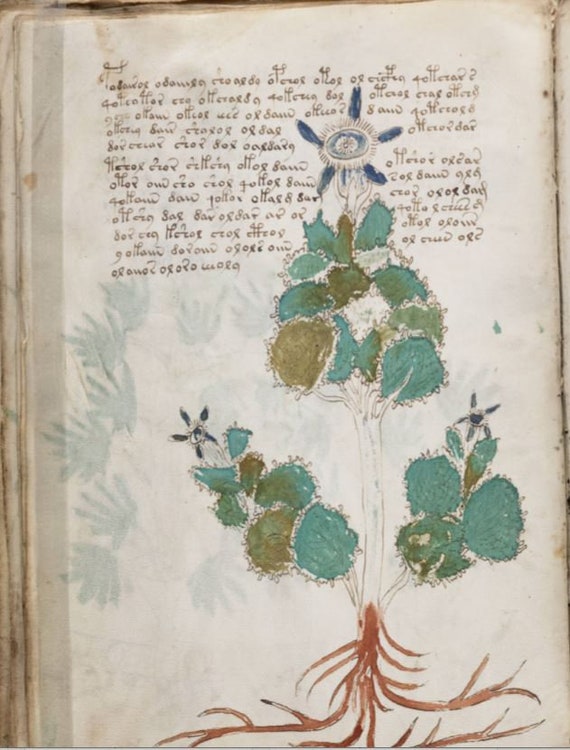

Anybody here know what medieval plant science looked like? More specifically on the grafting idea, this page could also be interpreted that way. Granted the placement of the illustrations in this particular text looks a bit strange to my eye, but I'm not a medievalist and that weirdness certainly doesn't mean this couldn't be a poorly-executed/amateurish medical text. They often look like a crazy person made them. I'm not sure whether Gibbs' interpretation is correct, but I think a lot of the "Oooh, the Voynich drawings are so mysterious" stuff comes from people who haven't looked at many medieval manuscripts. See, for example, either of these medieval illustration of an elephant.

Which wouldn't be out of place in a medieval manuscript.

Like if I asked you to describe a plant I've never seen before. None of the plants are so fantastical that the irregular features couldn't be explained by someone drawing them based on a description. Perhaps it can now be used to expand our knowledge of medieval medical practice. It seems a bit of an anticlimax, but the revellation that it is indeed a genuine document is certainly pleasing. This is one of those odd historical mysteries that I've often wondered about and never believed would be solved. It would be helpful to see more images of the manuscript, especially where he discusses comparisons to other medieval texts. It's a bit of a difficult article to read - quite densely written and rather long, and with a structure that is perhaps not as narratively helpful as we are used to. The strange writing is an abbreviated Latin, hence codebreakers' failure to work out the meaning the plant names are written only in a lost index and not on the extant pages themselves, apparently a common practice for this type of document and the information contained within the manuscript is typical of medical reference guides of the period, much of it seemingly copied from classical sources like Galen. Writing for the Times Literary Supplement, Nicholas Gibbs claims it is a medieval medical book.
Where was the voynich manuscript found cracked#
Now a researcher claims to have cracked it.
Where was the voynich manuscript found code#
Code breakers have attempted to crack it, but they have been unsuccessful until now. Numerous theories have arisen, from the suggestion that it is a 19th/early 20th century hoax possibly created by Voynich himself, to the rather more lighthearted idea of it being a medieval D&D manual. Carbon dating of the vellum dates said vellum to 1404-38. It is named for the Polish book dealer who obtained it in 1912. The Voynich manuscript is a strange document of the medieval period consisting of drawings of plants, some of them rather fantastical, cosmic scenes, people and other things, accompanied by text that appears to be in code.


 0 kommentar(er)
0 kommentar(er)
